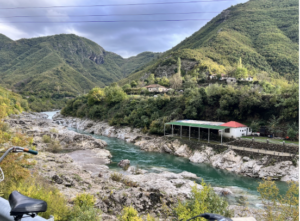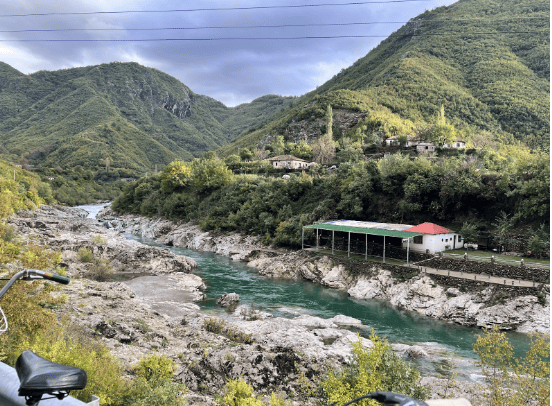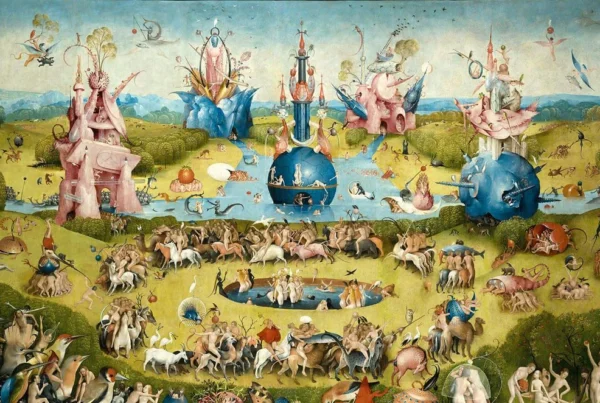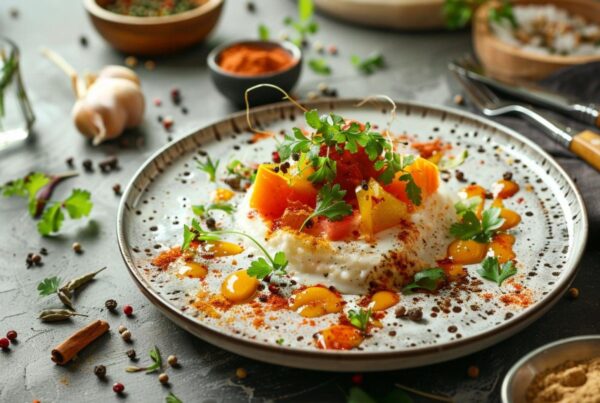
Albania has quickly become one of the most in-vogue “undiscovered” travel destinations for those who want to stretch their euros. The country of three million people could only be visited starting in 1991, when its half-a-century-old dictatorial regime fell. Since then, many travel guides have categorized Albania as a cheaper version of Greece or Croatia with a similarly stellar coast. To us, Albania is more than just easy on the wallet. We were drawn in, instead, by the verdant hills and snaking rivers of the country’s inland north. Our visit to Shkoder made for a great base from which to enjoy northern Albania’s abundant nature and to get to know the people and places outside of the capital, Tirana.
The Journey
Getting around Albania means adapting to its chaotic bus transport system, which connects Tirana to other cities and regions. Even as buses to certain destinations leave only a few times a day, information about bus schedules can be hard to track down. If information about a route’s schedule cannot be found online, then your best bet is to get to the terminal and ask for help there.
Buses leave and enter the capital at the South and North Bus Terminal, which resembles a mishmash of coaches and minibusses competing for space in a parking lot too small for its intended use. Buses display their destination on their windshields, but the best way to find your bus is to simply ask a local or another driver for a nudge in the right direction.
The journey to Shkoder, the largest city in the north of the country, is a frequent route, with buses leaving every half hour from early morning to the evening. We recommend packing a bit of Gravol or other anti-nausea medication for the journeys, as the pavement can get pretty rugged.
The Stay
During our time in northern Albania, we decided to stay in Shkoder, the capital of the region and the fifth-largest city in Albania. There are many great options for affordable hostels and hotels in the area. We stayed at The Galley Hostel (@thegalleyhostel on Instagram), which had a very social backpacker atmosphere.
The heart of the hostel was in the social areas on the ground floor, which included a garden courtyard, a shared kitchen, and communal lounge areas with a bar. The hostel seemed to have been mostly staffed by volunteers from around the world, who were very friendly and provided great recommendations for activities and restaurants. There were social activities every night including parties, movie nights, and tattoos by a tattoo artist. They also offer tours in the high season, alongside bike rentals year-round.
We opted for a double room with a private bathroom for 22 euros per night, but there are also options for female-only and mixed six-bed and eight-bed dorms. The room was simple, clean, and comfortable. The hostel was located in an optimal location, being about a 5-minute walk to the Old Town and within walking distance of many attractions, stores, and restaurants.
The Activities
Unfortunately, we arrived on November 1, which was coincidentally the first day of the off-season. As a result, many of the services that we were looking forward to were unavailable, including the boat to Komani Lake (about 100 kilometers outside of Shkoder), hostel tours and excursions, and some restaurants outside of the city on the riverbanks. Additionally, it was slightly too cold to swim, with the weather being around 18-20 degrees Celsius.
Regardless, we still had an amazing time doing the activities that were available. On our first night, we walked around Shkoder’s Old Town. The Old Town is a charming area based around a cobblestone pedestrian walkway lined with pastel-colored buildings with shops and restaurants.
In a country that is majority Muslim, the northwestern part is the most Catholic, due to historical contact with Rome and the Republic of Venice. This is displayed by the Ebu Bekr Mosque and the St. Stephen’s Catholic Church (also known as the Shkoder Cathedral), which are the central places of worship in the Old Town. The Ebu Bekr Mosque was built in 1995 on the site of the Fushë Çela mosque, which was destroyed during the communist regime. It is inspired by 16th-century Ottoman architecture, with a beautifully painted ceiling lined by blue and red designs. The eye-catching canary yellow facade and 23.5 meter bell tower mark St. Stephen’s Catholic Church which was built in 1867 in dedication to the first patron saint of the city. Exploring Shkoder’s Old Town revealed a captivating blend of Albania’s diverse history and charming architecture, highlighted by its religious diversity.
On our second day in Shkoder, we rented bikes for the day and went on a 42 km bike ride. Due to the lack of public transportation in the city and the somewhat flat terrain of the city, bikes are a very convenient and affordable way of getting around. We found a travel agency on Bulevardi Skenderbeu that rented bikes for 500 lek (about 5 euros) a day.
From the center of Shkoder, we headed to the northeast, towards the mountains. On the journey, we saw the rural areas of northern Albania, with leafy green fields and blossoming pomegranate shrubs. After about 30 minutes, we arrived at Mesi Bridge, an 18th-century Ottoman stone bridge built over the pristine blue waters of the Kir River.
We continued on our journey and admired the lush green mountains and the waterfalls that we passed. After about 40 minutes and 7 kilometers of incline, we finally made it to Prekal, which is a popular swimming destination in warmer weather. We stopped to enjoy the scenery and the fresh air, then began making our way westwards.
Our next stop was at Shkodra Lake, where we arrived 90 minutes later, just in time for the sunset, as shades of purple and pink streaked the sky over the clear waters of the lake. On our way back towards the city, we passed by the Rozafa Castle, an ancient castle that sits 130 meters above sea level. We finally made it back to the center after nightfall, after an amazing six hours of exploring the outskirts of Shkoder. The bike ride was easily among our favorite activities on our trip and is a must-do to discover the beautiful nature and rich history that northern Albania has to offer.
The Food
Most restaurants in Shkoder and its region are a mix of traditional Albanian, including plenty of local fish, and Italian restaurants. After getting off the bus and dropping off our bags, we were on the hunt for a caffeine boost and settled on Sol Bakery Caffè. This mellow hangout serves coffee and desserts throughout the day but also serves pasta and pizza in the evening.
If hunkering down on a whole sea bass or snapper is what you desire, head to Fish Art, a great seafood place for elegance on a budget. We paid by weight for a sea bass, which they roasted in the oven with a spritz of citrus on top. The fish and seafood pasta were tasty, though the octopus salad lacked some flavor.
For breakfast, we ate at Stolia Coffeehouse and Brunch, a cozy spot for breakfast that is decidedly not Albanian. Their selection of prosciutto and avocado toasts (between 170 and 230 lek) mixed soft and crunchy components for some exciting bites. The coffee menu, too, provided variety in the form of some specialty drinks, including salep with pistachio cream, along with coffeehouse standards.
We found some more traditional Albanian food far from the city, perched on rocky slopes over the Kir River. Bar Restorant Zalli I Kirit, north of the city and near the town of Drisht, served a set menu of grilled pork, salad, potato slices, white Albanian cheese, herby yogurt sauce, and bread. The meat was tastily seared yet not overdone in the middle. The meal was less than 2,000 Lek between two people. Other restaurants, like Bar Restaurant Miri, are perched so close to the running water that it seems that an outstretched hand could touch it. However, many of these were closed for the off-season, and we were not able to go.
For our final night in Shkoder, we headed to Taverna e Miqve, a traditional taverna grilling up meats as well as tavë kosi, the country’s national dish. This wholesome bake of lamb and rice in a yogurt-egg roux warmed me up as the weather turned colder. The roasted qebape, soft, finger-shaped sausages, were a great addition. Our favorite of all was the pickled eggplant salad, with soft and bright-tasting eggplants topped with a balsamic glaze.
To get to know the local fish a bit better, a stop in Shiroka, a town west of the city beside the pristine Shkodra Lake, is recommended. While a full meal did not fit into our schedule, we did stop at Xhaka Restaurant Bar for some Albanian beer and a twilight perspective on the lake. This and other restaurants sported large patios with wooden tables, perfect for a relaxed evening.
Other Tidbits
Though we are far from experts, we do have a few tips for those interested in a quick trip to Albania.
About half of all Albanians speak English to a comprehensible degree, so language was not a hefty barrier. Knowing a few Albanian phrases is, of course, welcomed by locals. Some knowledge of Italian could help you out in some establishments, too, given the strong economic ties between Italy and Albania.
Another tip is to take out cash (Albanian lek) for the trip, as this is the principal means of payment at any establishment. Even phone plan providers like Vodafone and grocery chains require payment in cash. Also note that while the currency is lek, most places will also accept euros as payment. The exchange rate is now 102 lek to 1 euro, though this is a historical low and 120:1 has tended to be the average in the past twenty years.
We had a fantastic trip in northern Albania and highly recommend it to any adventurous travelers. It is the perfect time to visit, as prices are comparatively low, and there is enough tourism infrastructure without it being too touristy. The people are incredibly friendly and helpful, and the region is filled with amazing food, stunning nature, and rich history and culture.
Other posts that may interest you:
- The Trouble with ‘Ecocide’
- Carbon dioxide removal – hit or miss?
- Local Victories for Turkish Opposition — A Sign of Hope?
- Are France and Japan a Mismatch Made in Heaven?
- A Reflection on Dark Tourism
Discover more from The Sundial Press
Subscribe to get the latest posts sent to your email.





